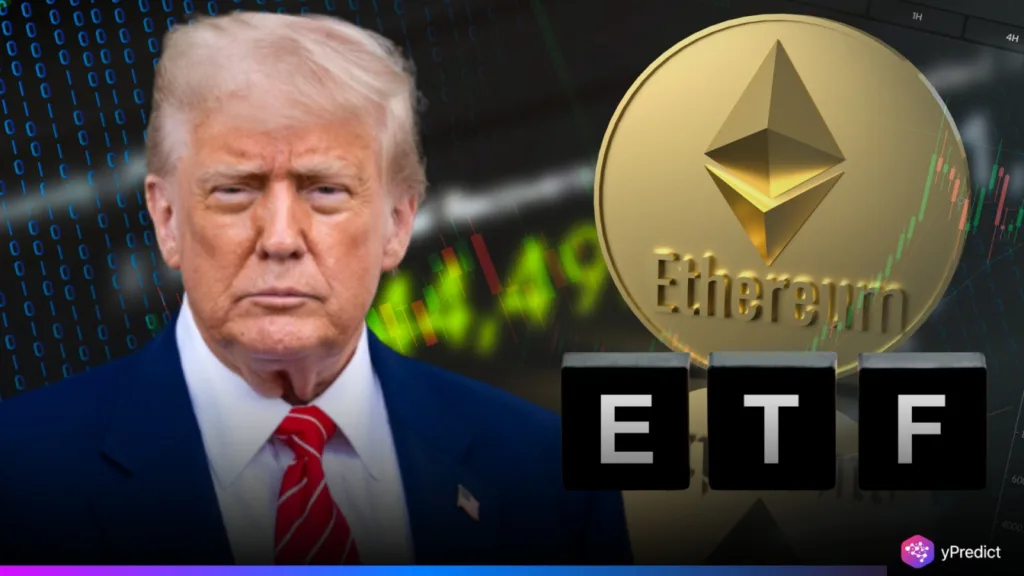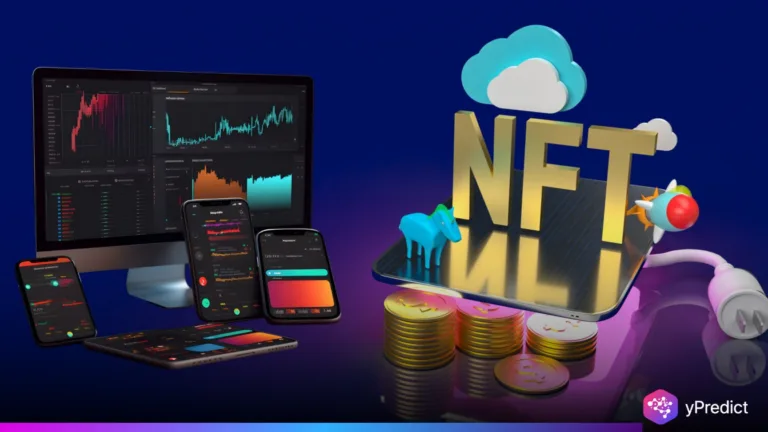
Ether ETF inflows surged to a record $383.1 million on July 11, 2025, marking the highest single-day influx in the product’s history. The spike happened only days after Donald Trump publicly endorsed pro-crypto legislation, that overcame initial resistance from the House after a White House meeting on July 16. Ethereum price increased 8.15% over the previous 24 hours to at $3,293.40 with trading volume above $40 billion. Those events plunged AI trading platforms vigorously into motion, liquidating positions in real-time, as they suggested both institutional flows and increased regulatory clarity were moving crypto markets.
AI Systems Detect Momentum in Ether ETF Inflows
AI-powered trading systems interpreted the Ether ETF spike as a strong bullish signal. Several deep-learning models, trained on inflow trends, flagged the $383.1 million figure as an anomaly, prompting automated systems to rebalance crypto-heavy portfolios. Within minutes of the data release, bots registered whale wallet accumulation and reentered Ethereum markets with increased volume.
Institutional AI tools, programmed for ETF sensitivity, reacted by increasing Ethereum exposure across multi-asset funds. Pattern-recognition systems identified a three-sigma deviation from average inflow benchmarks and initiated long Ethereum positions. Reinforcement learning engines used by hedge funds responded similarly, signaling high conviction based on historical inflow-price correlation.
These reactions weren’t isolated. Multiple trading desks reported parallel AI-driven decisions, all triggered by Ether ETF data. The consensus from AI systems was clear: institutional confidence is rising, and the inflows signal a structural shift in demand.
Trump Endorsement Drives Policy Sentiment in AI Models
Donald Trump’s endorsement of the crypto bill became another key data point in AI trading frameworks. Natural language processing models tracking political discourse flagged his statement as a “sentiment reversal event.” These models adjusted sentiment scores immediately after Trump voiced support, reflecting an expected improvement in crypto’s legislative environment. Political AI models, cross-referencing previous Trump statements with market reactions, raised Ethereum outlook ratings across several platforms.
Legislative monitoring algorithms that followed the White House meeting on July 16 recorded a sentiment shift in over 70% of tracked political narratives. As the bill advanced through the House, AI systems removed risk flags previously assigned to Ethereum and other large-cap assets. Quant-driven models noted the synchronicity between Trump’s comments and ETF inflows. AI interpreted this alignment as a validation loop, where political backing reinforced institutional behavior. By the end of the trading day, Ethereum held a larger allocation in most AI-managed crypto baskets.
Regulatory Clarity Alters Risk Calculations in Real Time
AI trading infrastructure is increasingly attuned to legislative cues, and the recent progress toward regulatory clarity shifted several core metrics. Real-time analytics tools recalculated risk-weighted asset scores for Ethereum, lowering them across multiple AI risk engines. These recalibrations came after key excerpts from the legislation were parsed and categorized as favorable by semantic AI filters. Trading bots removed cautionary flags on Ethereum after recognizing language tied to oversight, compliance, and institutional protections.
Machine-learning models monitoring financial media registered a tone change, labeling the narrative as “supportive.” These changes prompted asset managers using AI to lower volatility premiums and extend holding durations. The correlation between reduced perceived risk and AI allocations was immediate. Trading volumes reflected algorithmic confidence, as Ethereum’s positioning grew stronger in rebalanced portfolios. With Trump’s endorsement signaling political momentum and clarity increasing around compliance structures, AI moved fast to adapt.
AI Trading Activity Mirrors Market Breakout
Ethereum’s 8.15% jump and $40 billion trading volume did not go unnoticed by AI trend systems. Breakout detection models recognized the volume-price alignment as a textbook bullish pattern. These models triggered green signals shortly after U.S. markets opened on July 16, urging high-frequency systems to scale up ETH activity. AI-led hedge funds leaned into the trade, pointing to a confluence between political, regulatory, and flow-based indicators.
Momentum strategies, built on historical training data, indicated a higher probability of short-term continuation. Real-time dashboards used by trading firms displayed synchronized buy alerts across Ethereum pairings. AI didn’t wait for confirmation from human analysts. As data was updated, systems identified the shift and acted instantly. The aggressive entry points marked on July 16 reflected AI’s growing autonomy in responding to structural market change.






